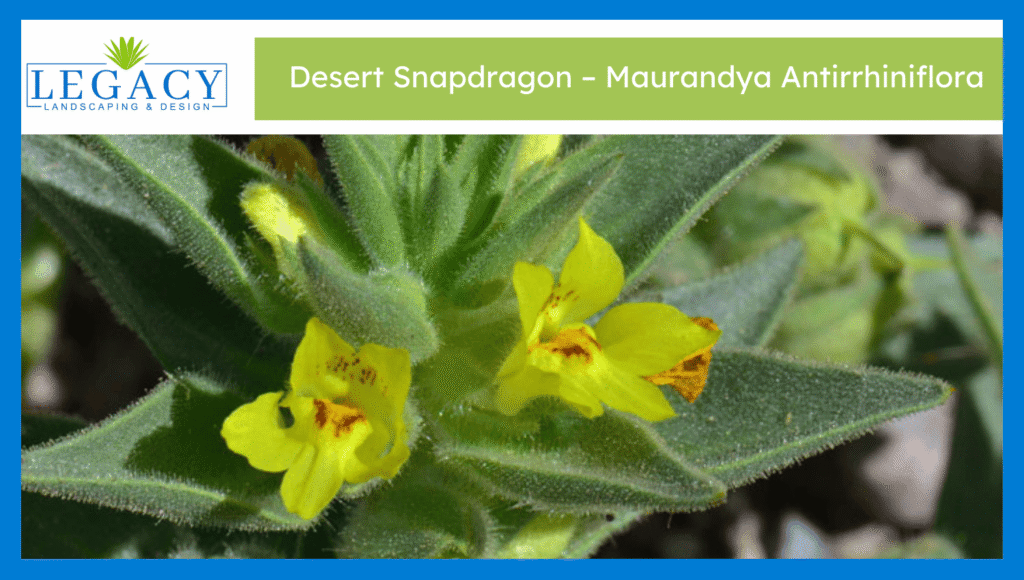Maurandya antirrhiniflora, or Desert Snapdragon, is a vine that grows and climbs in desert regions of the southwestern United States and northern Mexico. It thrives in rocky areas, along the sides of the valleys of the desert. It grows to 4 to 6 feet tall, featuring thin green stems that curl or wind around other objects. Its flowers, shaped like snapdragons, have pink, violet, or purple shades and attract hummingbirds and bees from the area. The flowers don’t always bloom at the same time because of regional weather conditions.
It has small, round green leaves that have a slight lobed shape. This plant does well in full sunlight, and it works best in sandy or rough soils. Planted Desert Snapdragon becomes very tolerant of dry conditions and is found at heights between 1,500 and 6,000 feet. Its bright colors, along with its benefits for pollinators, make it a perfect addition to dry landscapes.
| Characteristic | Description |
| Scientific Name | Maurandya antirrhiniflora |
| Common Name | Desert Snapdragon |
| Size | Vine-like herbaceous plant growing up to 3 feet long, often trailing or climbing with support. |
| Appearance | Slender, twining stems with delicate green leaves; tubular, snapdragon-like flowers. |
| Spines | None; stems and leaves are soft and non-thorny. |
| Flowers | Showy tubular flowers, usually pink to purplish in color with a bilateral symmetry resembling snapdragons. |
| Fruits | Small capsules containing numerous tiny seeds. |
| Root System | Fibrous and shallow roots adapted to quick water uptake in arid environments. |
| Lifespan | Short-lived perennial or annual depending on climate; can reseed under favorable conditions. |
| Habitat | Native to desert canyons and arid regions of the southwestern U.S. and northern Mexico. |
| Water Storage | Minimal; relies on rapid response to rainfall rather than water storage structures. |
| Growth Rate | Fast-growing during warm seasons with adequate moisture. |
| Flowering Time | Spring through early fall, depending on rainfall and temperature. |
| Reproduction | Reproduces by seeds; dispersal often aided by wind or water in washes. |
About The Author
Isaiah Espinoza
Isaiah Espinoza is the proud company owner, founder and driving force behind Legacy Landscaping and Design. Isaiah established Legacy Landscaping & Design in 2014, bringing his vision of creating stunning outdoor spaces to life. Isaiah, the founder of Legacy Landscaping & Design, has a deep-rooted passion for construction and design, stemming from four generations of family expertise in the industry. With a KB-1 General Building License and a CR-21 Hardscaping and Irrigation License, Isaiah has spent the past decade transforming outdoor spaces with exceptional craftsmanship and innovative design.

